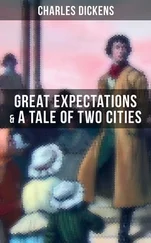Charles Dickens - Pictures from Italy
Здесь есть возможность читать онлайн «Charles Dickens - Pictures from Italy» весь текст электронной книги совершенно бесплатно (целиком полную версию без сокращений). В некоторых случаях можно слушать аудио, скачать через торрент в формате fb2 и присутствует краткое содержание. Жанр: Классическая проза, на английском языке. Описание произведения, (предисловие) а так же отзывы посетителей доступны на портале библиотеки ЛибКат.
- Название:Pictures from Italy
- Автор:
- Жанр:
- Год:неизвестен
- ISBN:нет данных
- Рейтинг книги:5 / 5. Голосов: 1
-
Избранное:Добавить в избранное
- Отзывы:
-
Ваша оценка:
- 100
- 1
- 2
- 3
- 4
- 5
Pictures from Italy: краткое содержание, описание и аннотация
Предлагаем к чтению аннотацию, описание, краткое содержание или предисловие (зависит от того, что написал сам автор книги «Pictures from Italy»). Если вы не нашли необходимую информацию о книге — напишите в комментариях, мы постараемся отыскать её.
Pictures from Italy — читать онлайн бесплатно полную книгу (весь текст) целиком
Ниже представлен текст книги, разбитый по страницам. Система сохранения места последней прочитанной страницы, позволяет с удобством читать онлайн бесплатно книгу «Pictures from Italy», без необходимости каждый раз заново искать на чём Вы остановились. Поставьте закладку, и сможете в любой момент перейти на страницу, на которой закончили чтение.
Интервал:
Закладка:
Why do the beggars rap their chins constantly, with their right hands, when you look at them? Everything is done in pantomime in Naples, and that is the conventional sign for hunger. A man who is quarrelling with another, yonder, lays the palm of his right hand on the back of his left, and shakes the two thumbs—expressive of a donkey's ears—whereat his adversary is goaded to desperation. Two people bargaining for fish, the buyer empties an imaginary waistcoat pocket when he is told the price, and walks away without a word: having thoroughly conveyed to the seller that he considers it too dear. Two people in carriages, meeting, one touches his lips, twice or thrice, holding up the five fingers of his right hand, and gives a horizontal cut in the air with the palm. The other nods briskly, and goes his way. He has been invited to a friendly dinner at half-past five o'clock, and will certainly come.
All over Italy, a peculiar shake of the right hand from the wrist, with the forefinger stretched out, expresses a negative—the only negative beggars will ever understand. But, in Naples, those five fingers are a copious language.
All this, and every other kind of out-door life and stir, and macaroni-eating at sunset, and flower-selling all day long, and begging and stealing everywhere and at all hours, you see upon the bright sea-shore, where the waves of the bay sparkle merrily. But, lovers and hunters of the picturesque, let us not keep too studiously out of view the miserable depravity, degradation, and wretchedness, with which this gay Neapolitan life is inseparably associated! It is not well to find Saint Giles's so repulsive, and the Porta Capuana so attractive. A pair of naked legs and a ragged red scarf, do not make ALL the difference between what is interesting and what is coarse and odious? Painting and poetising for ever, if you will, the beauties of this most beautiful and lovely spot of earth, let us, as our duty, try to associate a new picturesque with some faint recognition of man's destiny and capabilities; more hopeful, I believe, among the ice and snow of the North Pole, than in the sun and bloom of Naples.
Capri—once made odious by the deified beast Tiberius—Ischia, Procida, and the thousand distant beauties of the Bay, lie in the blue sea yonder, changing in the mist and sunshine twenty times aday: now close at hand, now far off, now unseen. The fairest country in the world, is spread about us. Whether we turn towards the Miseno shore of the splendid watery amphitheatre, and go by the Grotto of Posilipo to the Grotto del Cane and away to Baiae: or take the other way, towards Vesuvius and Sorrento, it is one succession of delights. In the last-named direction, where, over doors and archways, there are countless little images of San Gennaro, with his Canute's hand stretched out, to check the fury of the Burning Mountain, we are carried pleasantly, by a railroad on the beautiful Sea Beach, past the town of Torre del Greco, built upon the ashes of the former town destroyed by an eruption of Vesuvius, within a hundred years; and past the flat-roofed houses, granaries, and macaroni manufactories; to Castel-a-Mare, with its ruined castle, now inhabited by fishermen, standing in the sea upon a heap of rocks. Here, the railroad terminates; but, hence we may ride on, by an unbroken succession of enchanting bays, and beautiful scenery, sloping from the highest summit of Saint Angelo, the highest neighbouring mountain, down to the water's edge—among vineyards, olive-trees, gardens of oranges and lemons, orchards, heaped-up rocks, green gorges in the hills—and by the bases of snow-covered heights, and through small towns with handsome, darkhaired women at the doors—and pass delicious summer villas—to Sorrento, where the Poet Tasso drew his inspiration from the beauty surrounding him. Returning, we may climb the heights above Castela-Mare, and looking down among the boughs and leaves, see the crisp water glistening in the sun; and clusters of white houses in distant Naples, dwindling, in the great extent of prospect, down to dice. The coming back to the city, by the beach again, at sunset: with the glowing sea on one side, and the darkening mountain, with its smoke and flame, upon the other: is a sublime conclusion to the glory of the day.
That church by the Porta Capuana—near the old fisher-market in the dirtiest quarter of dirty Naples, where the revolt of Masaniello began—is memorable for having been the scene of one of his earliest proclamations to the people, and is particularly remarkable for nothing else, unless it be its waxen and bejewelled Saint in a glass case, with two odd hands; or the enormous number of beggars who are constantly rapping their chins there, like a battery of castanets. The cathedral with the beautiful door, and the columns of African and Egyptian granite that once ornamented the temple of Apollo, contains the famous sacred blood of San Gennaro or Januarius: which is preserved in two phials in a silver tabernacle, and miraculously liquefies three times a-year, to the great admiration of the people. At the same moment, the stone (distant some miles) where the Saint suffered martyrdom, becomes faintly red. It is said that the officiating priests turn faintly red also, sometimes, when these miracles occur.
The old, old men who live in hovels at the entrance of these ancient catacombs, and who, in their age and infirmity, seem waiting here, to be buried themselves, are members of a curious body, called the Royal Hospital, who are the official attendants at funerals. Two of these old spectres totter away, with lighted tapers, to show the caverns of death—as unconcerned as if they were immortal. They were used as burying-places for three hundred years; and, in one part, is a large pit full of skulls and bones, said to be the sad remains of a great mortality occasioned by a plague. In the rest there is nothing but dust. They consist, chiefly, of great wide corridors and labyrinths, hewn out of the rock. At the end of some of these long passages, are unexpected glimpses of the daylight, shining down from above. It looks as ghastly and as strange; among the torches, and the dust, and the dark vaults: as if it, too, were dead and buried.
The present burial-place lies out yonder, on a hill between the city and Vesuvius. The old Campo Santo with its three hundred and sixty-five pits, is only used for those who die in hospitals, and prisons, and are unclaimed by their friends. The graceful new cemetery, at no great distance from it, though yet unfinished, has already many graves among its shrubs and flowers, and airy colonnades. It might be reasonably objected elsewhere, that some of the tombs are meretricious and too fanciful; but the general brightness seems to justify it here; and Mount Vesuvius, separated from them by a lovely slope of ground, exalts and saddens the scene.
If it be solemn to behold from this new City of the Dead, with its dark smoke hanging in the clear sky, how much more awful and impressive is it, viewed from the ghostly ruins of Herculaneum and Pompeii!
Stand at the bottom of the great market-place of Pompeii, and look up the silent streets, through the ruined temples of Jupiter and Isis, over the broken houses with their inmost sanctuaries open to the day, away to Mount Vesuvius, bright and snowy in the peaceful distance; and lose all count of time, and heed of other things, in the strange and melancholy sensation of seeing the Destroyed and the Destroyer making this quiet picture in the sun. Then, ramble on, and see, at every turn, the little familiar tokens of human habitation and every-day pursuits; the chafing of the bucket-rope in the stone rim of the exhausted well; the track of carriagewheels in the pavement of the street; the marks of drinking-vessels on the stone counter of the wine-shop; the amphorae in private cellars, stored away so many hundred years ago, and undisturbed to this hour—all rendering the solitude and deadly lonesomeness of the place, ten thousand times more solemn, than if the volcano, in its fury, had swept the city from the earth, and sunk it in the bottom of the sea.
Читать дальшеИнтервал:
Закладка:
Похожие книги на «Pictures from Italy»
Представляем Вашему вниманию похожие книги на «Pictures from Italy» списком для выбора. Мы отобрали схожую по названию и смыслу литературу в надежде предоставить читателям больше вариантов отыскать новые, интересные, ещё непрочитанные произведения.
Обсуждение, отзывы о книге «Pictures from Italy» и просто собственные мнения читателей. Оставьте ваши комментарии, напишите, что Вы думаете о произведении, его смысле или главных героях. Укажите что конкретно понравилось, а что нет, и почему Вы так считаете.












